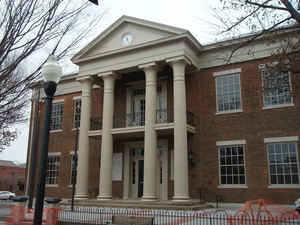Williamson County, Tennessee
Williamson County Education, Geography, and History

Williamson County is a county in the state of Tennessee. As of the United States Census, the population was 205,226. The county seat is
Franklin. The county is named after Hugh Williamson, a North Carolina politician who signed the US Constitution.
Williamson County is part of the Nashville-Davidson-Murfreesboro-Franklin, TN Metropolitan Statistical Area.
Etymology - Origin of Williamson County Name
Named in honor of Hugh Williamson (1735-1819), surgeon-general of North Carolina troops in the American Revolution, North Carolina legislator, member of the Continental and US Congresses.
Demographics:
County QuickFacts: CensusBureau Quick Facts
History of Williamson County
Created 1799 from Davidson County; named in honor of Hugh Williamson (1735-1819), surgeongeneral of North Carolina troops in the American Revolution, North Carolina legislator, member of the Continental and US Congresses.
Williamson County was formed in 1799 from Davidson County
(Acts of Tennessee
1799, Chapter 3).
Tennessee Encyclopedia of History and Culture
Centuries before Europeans settled in what was to become Williamson County the area was home to at least five
prehistoric cultures. Over many centuries these occupants of the Harpeth Valley progressed from a nomadic existence
to a settled lifestyle in fortified villages along the Big Harpeth River and its tributaries. When white scouts and
long hunters ventured onto the land, tribes of Cherokees, Chickasaws, Choctaws, Creeks, and Shawnees were sharing
its bounty in a migratory fashion.
From the time white settlers began to attempt to wrest the area from the Indians, they were determined to have the
rich, well watered meadows and forests at all costs. They paid dearly for their desire to settle the region before
treaties were signed, and several lost their lives to the tomahawks and arrows of those first Williamson Countians
defending their hunting grounds.
By 1798 a few white settlers were permanently established in the area. Ewen Cameron built the first house in
Franklin, and members of the Goff, McEwen, and Neely families made their way through the canebrake southward from
Fort Nashborough. In 1799 Major Anthony Sharp sold 640 acres of his enormous military grant to Abram Maury, who laid
out the county seat of Franklin, named for Benjamin Franklin, on 109 acres of this property in 1800. The little
village with its huddle of log cabins was half-circled by the Big Harpeth River. Franklin and Williamson County were
created by the Tennessee General Assembly on October 26, 1799. Carved from neighboring Davidson, the new county was
named for Dr. Hugh Williamson, a Revolutionary patriot and distinguished statesman from North Carolina. Find more from the Tennessee Encyclopedia of History and Culture:
WILLIAMSON COUNTY
Geography: Land and Water
According to the census bureau, the county has a total area of 584 square miles (1,512 km2), of which, 583 square
miles (1,509 km2) of it is land and 1 square miles (2 km2) of it (0.16%) is water. The county is named after Hugh
Williamson, a North Carolina politician who signed the US Constitution.
Neighboring Counties
Bordering counties are as follows:
- Davidson County (north)
- Rutherford County (east)
- Marshall County (southeast)
- Maury County (south)
- Hickman County (southwest)
- Dickson County (northwest)
- Cheatham County (north-northwest)
Education
K-12 public education in the county is under the jurisdiction of Williamson County Schools, which operates 41 schools.







